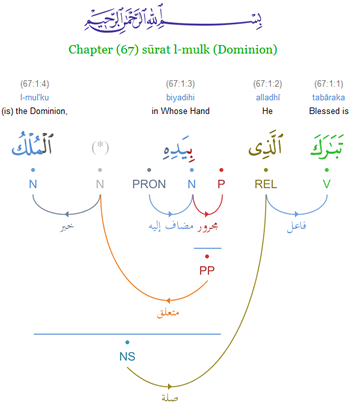
Back Nahu ACE نحو عربي Arabic نحو عربى ARZ আরবি ব্যাকরণ Bengali/Bangla نەحو (زمانی عەرەبی) CKB Arabisk grammatik Danish Grammaire arabe French Արաբերենի քերականություն Armenian Tata bahasa Arab ID Grammatica araba Italian

Arabic grammar (Arabic: النَّحْوُ العَرَبِيُّ) is the grammar of the Arabic language. Arabic is a Semitic language and its grammar has many similarities with the grammar of other Semitic languages. Classical Arabic and Modern Standard Arabic have largely the same grammar; colloquial spoken varieties of Arabic can vary in different ways.
The largest differences between classical and colloquial Arabic are the loss of morphological markings of grammatical case; changes in word order, an overall shift towards a more analytic morphosyntax, the loss of the previous system of grammatical mood, along with the evolution of a new system; the loss of the inflected passive voice, except in a few relict varieties; restriction in the use of the dual number and (for most varieties) the loss of the feminine plural. Many Arabic dialects, Maghrebi Arabic in particular, also have significant vowel shifts and unusual consonant clusters. Unlike in other dialects, first person singular verbs in Maghrebi Arabic begin with a n- (ن). This phenomenon can also be found in the Maltese language, which itself emerged from Sicilian Arabic.